- Home
- Dante Alighieri
Dante's Lyric Poetry: Poems of Youth and of the 'Vita Nuova'
Dante's Lyric Poetry: Poems of Youth and of the 'Vita Nuova' Read online
DANTE’S LYRIC POETRY
Poems of Youth and of the Vita Nuova
(1283–1292)
The first comprehensive English translation and commentary on Dante’s early verse to be published in almost fifty years, Dante’s Lyric Poetry includes all of the poems written by the young Dante Alighieri between c. 1283 and c. 1292. Introductory essays by Teodolinda Barolini guide the reader through the new verse translations by Richard Lansing, illuminating Dante’s transformation from a young courtly poet into the writer of the vast and visionary Commedia.
Barolini argues that Dante’s lyric poems are early articulations of many of the ideas and themes in the Commedia, including the philosophy and psychology of desire and its role as motor of all human activity, the quest for vision and transcendence, the search for justice on earth, and the transgression of boundaries in society and in poetry. With splendid new English translations and commentary, this edition brings Dante’s early poems to a wider audience, while providing important literary and historical context.
(The Lorenzo Da Ponte Italian Library)
TEODOLINDA BAROLINI is the Lorenzo Da Ponte Professor of Italian at Columbia University.
RICHARD LANSING is a Professor Emeritus of Italian Studies and Comparative Literature at Brandeis University.
ANDREW FRISARDI is a writer, editor, and translator who lives near Orvieto, Italy.
THE LORENZO DA PONTE ITALIAN LIBRARY
General Editors
Luigi Ballerini and Massimo Ciavolella
University of California at Los Angeles
Honorary Chairs
Mr Joseph Del Raso Esq
Ambassador Gianfranco Facco Bonetti
Honorable Anthony J. Scirica
Advisory Board
Remo Bodei, Università di Pisa
Lina Bolzoni, Scuola Normale Superiore di Pisa
Francesco Bruni, Università di Venezia
Cesare De Michelis, Università di Padova
Giorgio Ficara, Università di Torino
Giuseppe Mazzotta, Yale University
Gilberto Pizzamiglio, Università di Venezia
Margaret Rosenthal, University of Southern California
John Scott, University of Western Australia
Elissa Weaver, University of Chicago
DANTE’S LYRIC POETRY
Poems of Youth and of the Vita Nuova (1283–1292)
Dante Alighieri
Edited with a general introduction and introductory essays
by TEODOLINDA BAROLINI
With new verse translations by Richard Lansing
Commentary translated into English by Andrew Frisardi
© University of Toronto Press 2014
Toronto Buffalo London
www.utppublishing.com
Printed in the U.S.A.
ISBN 978-1-4426-4840-1 (cloth)
ISBN 978-1-4426-2619-5 (paper)
Printed on acid-free, 100% post-consumer recycled paper with vegetable-based inks.
The Lorenzo Da Ponte Italian Library
Publication cataloguing information is available from Library and Archives Canada.
Publication of this book has been assisted by the Istituto Italiano di Cultura, Toronto.
This book has been published under the aegis and with financial assistance of: Fondazione Cassamarca, Treviso; the National Italian-American Foundation; Ministero degli Affari Esteri, Direzione Generale per la Promozione e la Cooperazione Culturale; Ministero degli Affari Esteri, Direzione Generale per i Beni e le Attività Culturali, Direzione Generale per i Beni Librari e gli Istituti Culturali, Servizio per la Promozione del Libro e della Lettura.
This book has been published with the assistance of a grant from the Modern Language Association.
University of Toronto Press acknowledges the financial assistance to its publishing program of the Canada Council for the Arts and the Ontario Arts Council.
University of Toronto Press acknowledges the financial support of the Government of Canada through the Canada Book Fund for its publishing activities.
Contents
Dante’s Lyric Poetry: From Editorial History to Hermeneutic Future
Editions Cited in the Introductory Essays and Notes
Abbreviations
Note on Italian Versification
RIME
Tenzone between Dante Alighieri and Dante da Maiano
1a Provedi, saggio, ad esta visïone
1 Savete giudicar vostra ragione
The Tenzone del duol d’amore
2a Per pruova di saper com vale o quanto
2 Qual che voi siate, amico, vostro manto
3a Lo vostro fermo dir fino ed orrato
3 Non canoscendo, amico, vostro nomo
3b Lasso, lo dol che più mi dole e serra
Tenzone between Dante Alighieri and Dante da Maiano
4a Amor mi fa sì fedelmente amare
4 Savere e cortesia, ingegno ed arte
5 A ciascun’alma presa e gentil core
VN III (1)
6 Se Lippo amico sè tu che mi leggi
7 Lo meo servente core
8 O voi che per la via d’Amor passate
VN VII (2)
(First Redaction)
9 Piangete, amanti, poi che piange Amore
VN VIII (3)
10 Morte villana, di pietà nemica
VN VIII (3)
11 La dispietata mente che pur mira
12 Madonna, quel signor che voi portate
13 Deh ragioniamo insieme un poco, Amore
14 Sonetto, se Meuccio t’è mostrato
15 Com più vi fere Amor co’ suo’ vincastri
16 No me poriano zamai far emenda [Non mi poriano già mai fare ammenda]
(Two Redactions)
17 Sonar bracchetti e cacciatori aizzare
18 Volgete gli occhi a veder chi mi tira
19 Guido, i’ vorrei che tu e Lapo ed io
20 Amore e monna Lagia e Guido ed io
21 Per una ghirlandetta
22 Deh, Vïoletta, che ’n ombra d’Amore
23 Cavalcando l’altr’ier per un cammino
VN IX (4)
24 Ballata, i’ voi che tu ritrovi Amore
VN XII (5)
25 Tutti li miei penser parlan d’Amore
VN XIII (6)
26 Con l’altre donne mia vista gabbate
VN XIV (7)
(First Redaction)
27 Ciò che m’incontra, nella mente more
VN XV (8)
(First Redaction)
28 Spesse fiate vegnonmi a la mente
VN XVI (9)
29 Degli occhi della mia donna si move
30 Ne le man vostre, gentil donna mia
31 Lo doloroso amor che mi conduce
32 E’ m’incresce di me sì duramente
33 Donne ch’avete intelletto d’amore
VN XIX (10)
34 Amore e ’l cor gentil sono una cosa
VN XX (11)
35 Negli occhi porta la mia donna Amore
VN XXI (12)
(First Redaction)
36 Voi che portate la sembianza umile
VN XXII (13)
37 Se’ tu colui c’ hai trattato sovente
VN XXII (13)
38 Onde venite voi così pensose?
39 Voi donne, che pietoso atto mostrate
40 Donna pietosa e di novella etate
VN XXIII (14)
41 Un dì si venne a me Malinconia
42 Io mi senti’ svegliar dentro a lo core
VN XXIV (15)
43 Tanto gentile e tanto o
nesta pare
VN XXVI (17)
(First Redaction)
44 Vede perfettamente ogne salute
VN XXVI (17)
(First Redaction)
45 Di donne io vidi una gentil schiera
46 Sì lungiamente m’ha tenuto Amore
VN XXVII (18)
47 Li occhi dolenti per pietà del core
VN XXXI (20)
48 Venite a ’ntender li sospiri miei
VN XXXII (21)
(First Redaction)
49 Quantunque volte, lasso!, mi rimembra
VN XXXIII (22)
50 Era venuta nella mente mia [Era venuta ne la mente mia]
VN XXXIV (23)
(First Redaction and Redaction of the Vita Nuova)
51 Videro gli occhi miei quanta pietate
VN XXXV (24)
(First Redaction)
52 Color d’amore e di pietà sembianti
VN XXXVI (25)
(First Redaction)
53 L’amaro lagrimar che voi faceste
VN XXXVII (26)
54 Gentil pensero che parla di vui
VN XXXVIII (27)
55 Lasso, per forza di molti sospiri
VN XXXIX (28)
(First Redaction)
56 Deh pellegrini che pensosi andate
VN XL (29)
(First Redaction)
57 Oltra la spera che più larga gira
VN XLI (30)
(First Redaction)
58 Per quella via che la Bellezza corre [Per quella via che·lla Bellezza corre]
(Two Redactions)
Alphabetic Index of First Lines
General Index
DANTE’S LYRIC POETRY
Poems of Youth and of the Vita Nuova
(1283–1292)
Dante’s Lyric Poetry: From Editorial History to Hermeneutic Future
This commentary offers critical readings of Dante’s youthful lyrics (rime in Italian), spanning the years circa 1283 – circa 1292, and including the poems eventually inserted by Dante in the Vita Nuova. My aim is to illuminate the conceptual itinerary that led a young courtly poet of the final decades of the thirteenth century to become the writer of the vast and visionary Commedia. My readings of the poems work to shed light on the relationship of the rime to the Commedia, to show how the first inklings of the poema sacro can be found in the lyrics. Indeed, my commentary is the first systematically to connect Dante’s early poetry to his later masterpiece. The importance of the early poems to understanding the Commedia is the overarching theme of this work.
Dante’s lyric poetry has traditionally been the province of philologists, and it has remained to some degree virgin territory for critics. My commentary reads critically, rather than merely glossing, bringing to bear critical approaches (for instance, an interest in gender) that have never before been employed in discussing Dante’s lyric poetry. Throughout this commentary I look more forward than back, in terms of Dante’s own trajectory. Along with the traditional work of showing echoes of this troubadour or that Sicilian precursor, I work to illuminate the ideological wellsprings of the Commedia, the early presence of many of the core issues that we associate with the later Dante: the philosophy and psychology of desire and its role as motor of all human activity, the quest for vision and transcendence, the frustrating search for justice on earth, and the transgressing of boundaries in society and in poetry, along with an abiding interest in gender issues and social anxiety.
Stylistic and Ideological Experimentation
The extraordinary texts – canzoni, ballate, and sonnets – to which we refer when we talk about Dante’s lyrics (this is not a unitary work: there is no collection identified and entitled by the author), consists, according to tradition, of eighty-eight poems whose attribution to Dante is certain. Domenico De Robertis recently increased this number by eight poems; we will return to the issue of poems of uncertain attribution later in this Introduction. Written over a period of approximately twenty-five years, the lyrics offer us access to the poet’s workbench, allowing us to glimpse the process through which Dante became Dante. These poems on the one hand testify to the paths not taken, and on the other allow us to identify with greater clarity when, how, and by what incremental and gradual steps Dante ventured along the path that would ultimately become his.
Dante started to compose his lyrics sometime before 1283 (the date of the sonnet A ciascun’alma, the first poem in the Vita Nuova) and continued to write them for about a quarter of a century: throughout the time – from the condemnations of January and March 1302 onward – of his exile from Florence (witnessed by the canzone Tre donne) and lasting to approximately 1307 (the presumed date of the canzone Amor, da che convien). Dante’s lyrics manifest enormous variety, beginning with early compositions written in the Guittonian manner (for example, the tenzoni, or poetic dialogues, with Dante da Maiano), and as evidenced in other youthful poems that explore various styles: the Sicilian style of the canzone La dispietata mente; the courtly brio associated with Folgore da San Gimignano that we see, for example, in the sonnet Sonar bracchetti; the Cavalcantian delicacy that infuses the ballata Per una ghirlandetta; and the style (found quintessentially in sonnets like Tanto gentile e tanto onesta pare) that Dante in Purgatorio 24 will retroactively christen dolce stil novo (sweet new style), a style that we find not only in many poems of the Vita Nuova but also in the love poems that the Convivio dedicates to Lady Philosophy.
After a phase of stylistic and lexical contraction, aimed at achieving the refined purity of the stil novo, the restricting of lexicon and rhetoric gives way to a phase of expansion, which then characterizes all of Dante’s subsequent poetic production. This centrifugal push is already foreshadowed in the lyrics that make up the tenzone with Forese Donati, written before the latter’s death in 1296, as well as in the rime petrose (stony lyrics), dedicated to a cold and unresponsive woman, whose heart is “petrified” and who is called accordingly la pietra (the stone) – lyrics datable to about December 1296, the date indicated by the astronomical periphrasis in the petrosa canzone Io son venuto. There are also moral and philosophical poems, as for example the canzone on true nobility, Le dolci rime, in which Dante is likely the first poet who incorporates a translation of Aristotle’s Ethics into verse;1 the socially engaged canzone dedicated to the courtly quality of leggiadria (the grace or refinement of the courtly lover), Poscia ch’Amor; the canzone Doglia mi reca, a meditation on desire, and the canzone of exile, Tre donne; and finally the last poems that have love as their subject, such as the sonnets exchanged with Cino da Pistoia and the late canzone with a clearly Cavalcantian affect and tonality, Amor, da che convien. Although Dante’s lyrics have often been undervalued compared to the more cohesive and monotonal production of a Cavalcanti or a Petrarch, it is in fact precisely this variety that determines their greatness. They constitute – together with the prose works of the early exilic years, De vulgari eloquentia and Convivio – the linguistic, stylistic, and ideological prerequisites of the Commedia.
The lyrics document Dante’s stylistic and ideological experimentation and help us connect the dots between the youthful courtly Dante and the mature poet-philosopher. For instance, the tenzone in rapid-fire scurrilous sonnets battled out between Dante and his friend Forese Donati helps us construe the passage from the narrow, circumscribed world of the Vita Nuova to the philosophically inclusive and socially differentiated universe of the Commedia. From a stylistic point of view, the lyrics reveal many features that will converge in the Commedia: for instance, the tenzone with Forese contains the germs of what will be the low back-and-forth style of the brawl between Sinon and Master Adam in Inferno 30. From an ideological point of view, the lyrics may also reveal features that Dante will later abandon: thus the early canzoni E’ m’incresce di me and Lo doloroso amor bear witness to the presence of a Beatrice who presages not life but death. In Lo doloroso amor Dante affirms that “per quella moro c’ha nome Beatrice [I die for / on account of her whos
e name is Beatrice]” (14), a decidedly perverse statement for a poet who constructed his mature ideology on the concept that “I live for / on account of her whose name is Beatrice.” Lo doloroso amor provides in this way an interstice – a fissure – through which we can glimpse the deviations in Dante’s thought, the shifts of ideological orientation, shedding light on the not always linear path that Dante travelled. We learn that Dante’s arrival at the mature notion of Beatrice and salvific love was far from preordained.

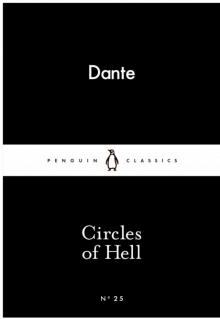 Circles of Hell
Circles of Hell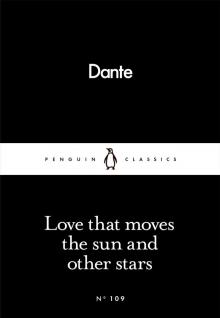 Love That Moves the Sun and Other Stars
Love That Moves the Sun and Other Stars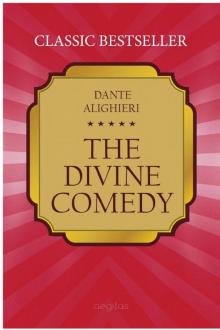 The Divine Comedy
The Divine Comedy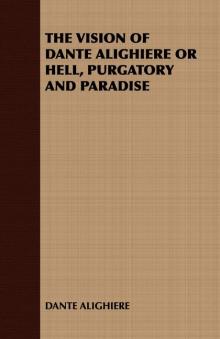 The Vision of Dante Alighiere or Hell, Purgatory and Paradise
The Vision of Dante Alighiere or Hell, Purgatory and Paradise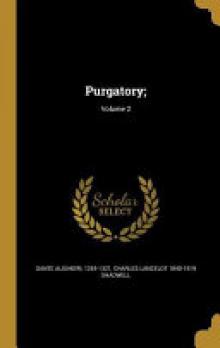 Purgatory
Purgatory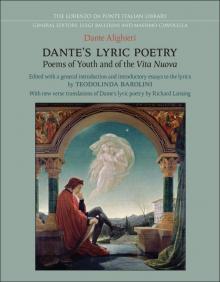 Dante's Lyric Poems (Italian Poetry in Translation)
Dante's Lyric Poems (Italian Poetry in Translation)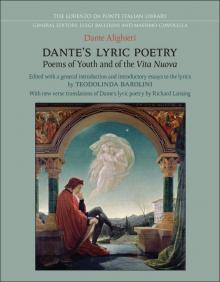 Dante's Lyric Poetry: Poems of Youth and of the 'Vita Nuova'
Dante's Lyric Poetry: Poems of Youth and of the 'Vita Nuova'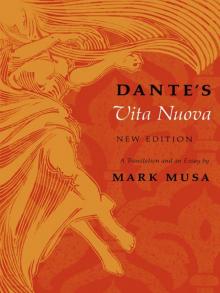 Dante’s Vita Nuova, New Edition: A Translation and an Essay
Dante’s Vita Nuova, New Edition: A Translation and an Essay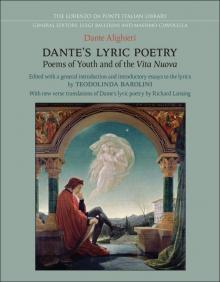 Dante's Lyric Poetry
Dante's Lyric Poetry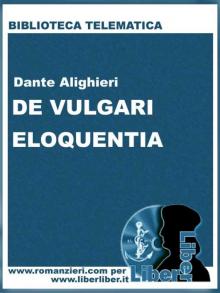 De vulgari eloquentia
De vulgari eloquentia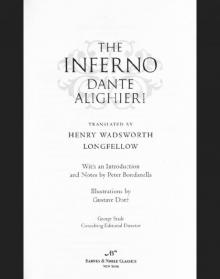 The Inferno (Barnes & Noble Classics Series)
The Inferno (Barnes & Noble Classics Series)